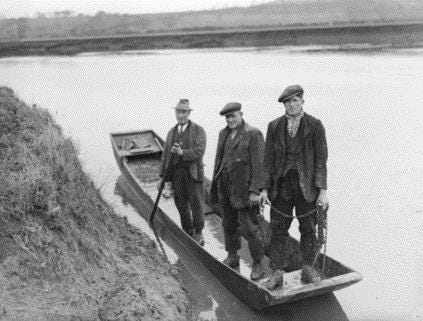In Musing No 5 I noted that the remains of ‘Bella’ were lost and that her case was finally laid to rest by West Mercia Police in 2005. Without her the case could go no further. The 2005 report makes for interesting reading with the unusual recommendation by Detective Chief Inspector Nicholls that:
Consideration should be afforded to placing the documentation in Worcestershire Records Office as an historic document.1
And instructions were given to carry out this recommendation and the ‘Bella’ files arrived at Worcestershire Archives in 2009 entirely open for research. It’s very rare that regional police forces voluntarily pass any case paperwork to archives and even rarer to allow them to be opened. Having trawled through the online catalogues of nearly every local record office in England and Wales I have identified 117 murder files—which should strictly be classed as homicide files covering murder, manslaughter and infanticide and, other than Worcestershire, the only other papers which come to mind are documents relating to the Haw Bridge murder of 1938, another unresolved case.2

The pathologist, Sir Bernard Spilsbury, was of the opinion that the remains were the missing Captain William Butt and unlike the ‘Bella’ case, the Metropolitan Police sent their ‘man from the Yard’ in the form of Detective Chief Inspector Percy Worth, to assist Gloucestershire Constabulary. However, his apparent arrogance upset both the local newspapers and police which, like the ‘Bella’ case, led to intense and intrusive press coverage and public interest creating numbers of false leads, red herrings and errors. With the onset of World War II a year later, the investigation petered out.

In rare mutual trust Gloucestershire Constabulary passed the large collection of files to Gloucestershire Archives along with surviving forensic evidence and exhibits including a button, coat belt and string found near the crime scene, keys, a handkerchief, a matchbox along with specimens of hair, ‘scrapings from drain,’ and a glass jar marked ‘piece of bone taken from left thigh of torso by Sir Bernard Spilsbury.’3 In turn, Gloucestershire Archives acknowledges the significance of the papers it holds describing on their digital catalogue that: ‘attention has been paid to listing minutiae because of the importance attached to detail in such a case. Where possible each item has been listed individually and dated exactly.’ All the case papers are carefully protected and access only given with consent from the constabulary; the physical exhibits, reflecting that they contain human tissue and the case remains unsolved, have a catalogue note saying that they are not to be produced at all—and there remains controversy around this decision with remote descendants of Captain Butt continuing to request access for DNA testing.
Murder files, then, are not easy things to caretake and today I’ve been trying to write about balancing the responsibility of safeguarding such casework and the rights of researchers—whether historians, writers or family—to access them.
Worcestershire Archives, The Hagley Wood murder, 1943; Cat No. 010.18.BA14908/4
If you would like to read about the case, I recommend Richard Whittington-Egan’s The great British torso mystery (The Bluecoat Press: 2002)
Gloucestershire Archives, Haw Bridge murder enquiry 1938, Cat No. Q/Y/4/9/3.

